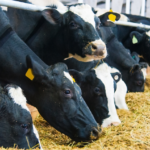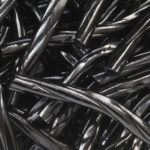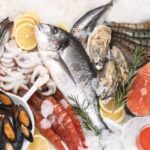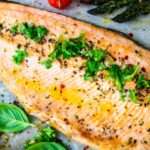
What are Ultra-Processed Foods and Should You Avoid Them?
If processed foods are bad, ultra-processed foods must be really bad, right?
Choosing healthy foods every day can be overwhelming and many times, we use a short cut that “processed” equals “unhealthy.”
But that equation does not consider that almost all foods are processed to some extent. Some processed foods – even ultra-processed foods – can help us eat better, explains Best Food Facts expert Dr. Joanne Slavin.
“Food processing has allowed us to have access to seasonal foods throughout the year. Canned fruits and vegetables which are picked and processed at their peak provide more nutrients than fresh fruits and vegetables that have traveled long distances and sat on a shelf for a long time. Food security is improved with food processing, so we can appreciate that food processing is critical for food security and food safety,” she said.
Dr. Slavin is a professor in the Department of Food Science and Nutrition at the University of Minnesota – Twin Cities, College of Food, Agricultural and Natural Resource Sciences. She has authored more than 350 scientific articles on dietary fiber, carbohydrates, whole grains, protein, snacking, gut health, brain health, and sustainable agriculture and was a member of the 2010 Dietary Guidelines Advisory Committee. Best Food Facts will take a closer look at ultra-processed foods in several articles. In this first article of the series, we explore what UPFs are, how they differ from other processed foods and why they don’t all warrant a “bad for you” label. In upcoming installments, we will dig deeper into food processing and tips for balancing convenience and health.
What are ultra-processed foods?
Dr. Slavin noted that the term “ultra-processed foods” (UPFs) does not have an official universal definition. However, the most commonly used definition is from the Nova food classification system developed by the Center for Epidemiological Studies in Health and Nutrition, School of Public Health at the University of São Paulo in Brazil. Nova defines ultra-processed as “industrially created food products created with the addition of multiple ingredients as well as additives to enhance the taste and/or convenience of the product.”
This category can include far more than so-called “junk food.” Dr. Slavin notes: “Different foods have different processing needs for food safety, acceptability, shelf life, and enrichment rules. In the dairy group, for instance, most foods except plain yogurt, traditional cheeses and unprocessed milk would be considered ultra-processed. Most breads are UPFs, especially when they are enriched with nutrients.”
What are the downsides of UPFs?
Dr. Slavin: “Many UPFs are high in calories, sodium, saturated fats, and added sugars. They are likely high in calories and need to be limited in diets of those seeking to lose weight. Epidemiologic studies have found relationships between intake of UPFs and chronic diseases, although the mechanisms for specific effects of UPFs are limited.”
Can UPFs be healthy?
Dr. Slavin: “Most of the foods that are recommended in the Dietary Guidelines for Americans are UPFs and you can put together diets containing mostly UPFs that score high on the Healthy Eating Index. Since whole grains and dietary fiber can be added to UPFs, the addition of UPFs high in whole grains and fiber can provide health benefits. Some UPFs can have reduced sodium or less added sugar, which help improve diets.”
Should you try to avoid all UPFs?
Dr. Slavin: “Avoiding UPFs as a category has not been shown to improve diet quality so avoiding UPFs may not be a useful as avoiding specific items, such as sodium, added sugars, or added fats, components suggested to be reduced by the Dietary Guidelines for Americans.”
Which processed foods are good to include in your Diet?
Dr. Slavin: “We need to consume fruits, vegetables, legumes, grains, dairy, and protein sources to put together nutritious diets. Within each of these categories, foods that are frozen, canned, dried, extruded, flaked, stabilized, etc. are important to include in your diet, even if they are considered UPFs.”
How can you identify what to avoid in processed foods?
Dr. Slavin: “You can read labels and avoid components that are known to affect your personal health. If you have any allergies or sensitivities, you can avoid these compounds. If you have a medical condition and need to avoid sodium, saturated fats, or added sugar, read labels and avoid those nutrients. There are no labels to help you identify UPFs and such a blanket restriction would not be expected to yield health benefits.”
What are some tips to make good choices with processed foods?
Dr. Slavin: “Read labels to avoid any components that you want to limit in your diet. Processed foods are often less expensive, more convenient, and less likely to be wasted, so many processed foods are the best choice for your family. Processed foods such as canned beans and peas can speed up home cooking and be stored in the home to be used as needed.”
Ultra-processed foods are foods which have been significantly altered or have added ingredients. There are many healthy options that are ultra-processed. Rather than avoiding all UPFs, consider reading labels for specific ingredients you wish to avoid. Choose healthy options to enjoy the convenience, more affordable and less wasteful options that processed foods provide.
More articles about processed food:
True or Not: “Fresh fruits and vegetables are better than canned or frozen produce.”
Canned, Frozen Fruits and Vegetables Offer Advantages
Fresh, Frozen, Canned, Dehydrated: Healthy Eating Year-Round


























